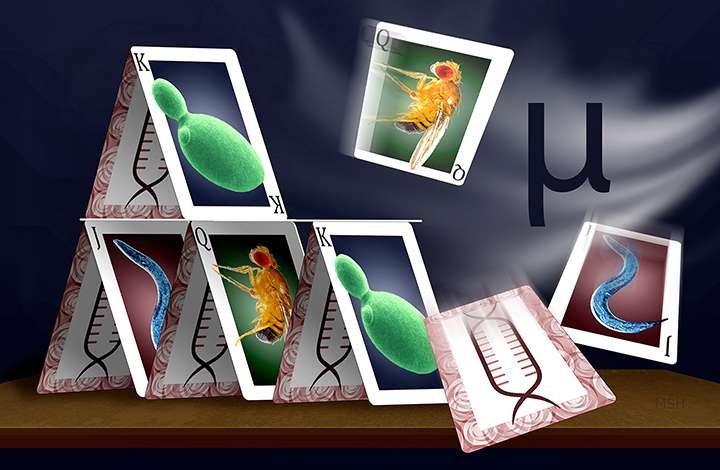Credit: Michael S. Helfenbein
Using sophisticated modeling of genomic data from diverse species, Yale researchers have answered a longstanding question about which competing model of evolution works best.
Their research suggests that the "house of cards" model—which holds that mutations with large effects effectively reshuffle the genomic deck—explains evolutionary processes better than the theory that species undergo the accumulation of many mutations with small effects.
"We found this model applied across vast evolutionary time—in yeast, worms and flies," said Jeffrey Townsend, associate professor of biostatistics and ecology & evolutionary biology and senior author of the study published in the journal Molecular Biology and Evolution.
The study evaluated three classical models of how organisms remain stable over time in the presence of mutations and selection. The analysis specifically evaluated the effects of these forces on gene expression, which for decades has been recognized as a key component of evolutionary change.
Darwin, of course, knew nothing about genes when he formulated his theory of how natural selection preserves traits that benefit the survival of organisms. Once the crucial role of genes was discovered, most evolutionary biologists conjectured that random mutations in genes were preserved in populations when they helped an organism survive or reproduce. Since mutations that have large effects are almost always fatal to the organism, one classical model holds that most must have small effects and that many would have to accumulate in order to create new traits and forms.
Another theory hypothesizes the opposite: that mutations do not cause small changes in fitness, but trigger a cascade of changes—the evolutionary "house of cards." A third theory is even simpler: that mutations have no effect on fitness whatsoever. Recent discoveries of how small bits of genetic material regulate expression of large networks of genes bolstered interest in the "house of cards" model, but only now has the theory been successfully demonstrated to be applicable to diverse organisms on a genomic scale.
"These models have been around for decades, but new technology for the first time allows us to gather data that can test which model is fundamental to the process of evolution," Townsend said.
More information: "Gene expression evolves under a House-of-Cards model of stabilizing selection." Mol Biol Evol first published online April 20, 2015 DOI: 10.1093/molbev/msv094
Journal information: Molecular Biology and Evolution
Provided by Yale University






















